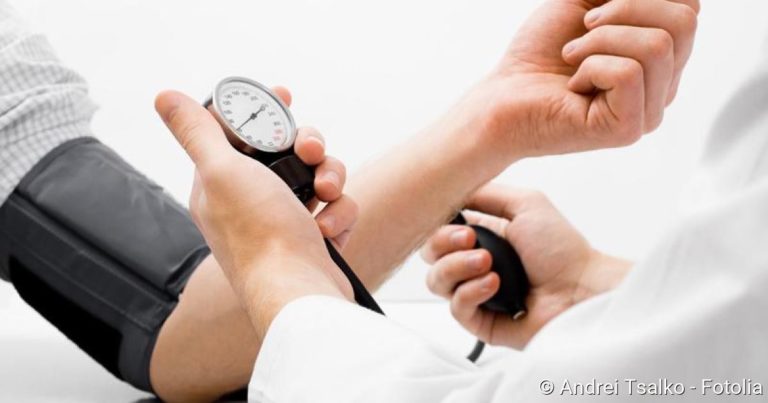Cystitis
Cystitis

Cystitis: short overview
- Symptoms: frequent, painful urination of small amounts of urine, cramp-like pain in the bladder, often unpleasant smelling, cloudy urine, rarely with blood, sometimes fever
- Treatment: especially for pregnant women and for recurring bacterial inflammations antibiotics, if necessary after previous germ determination
- Household remedies: a lot of drinking (>2l/day), special tarpaulin and kidney teas, hot water bottle (relaxes), warm footbaths, cranberry, nasturtium, hackle or horseradish root.
- Who is affected? Especially girls and women (shorter urethra!), risk increases during pregnancy and after menopause; rarely in boys/men, then often complicated course (cause study important!).
- Causes: mostly bacteria, sometimes fungi, parasites or viruses, rarely drugs or other external factors
- Triggers: carry-over of bacteria from the anal region, frequent sexual intercourse (in women), obstruction of the flow in the urethra, frequently used or long lying bladder catheters, metabolic (diabetes) and immune diseases
- Complications: ascending urinary tract infection, kidney (pelvic) inflammation, blood poisoning (urosepsis), epididymitis (in men), scarring in the bladder/shrinking bladder
- Caution: During pregnancy probably increased risk of miscarriage, pregnancy poisoning and reduced birth weight, therefore always treat!
Cystitis – symptoms
Mild bladder infections are sometimes only slightly noticeable. The classic signs of a common (uncomplicated) bladder infection are pain when passing water (alguria), which is usually felt as a burning sensation, and a frequent urge to urinate, with only small amounts of urine being passed (pollakiuria).
These are often the only complaints. There are, however, more symptoms that indicate a bladder infection and which may be more or less severe or even not pronounced at all due to various factors (concomitant diseases, type of pathogens). Among the most common symptoms, however, they never occur all together:
- Pain in urinating
- difficulty urinating (dysuria)
- frequent urination
- increased nocturnal urination (nocturia)
- Pain in the bladder area (suprapubic pain)
- Cramp-like, painful contraction of the bladder with a strong urge to urinate (tenesmus)
There are also other signs that could indicate a bladder infection:
- Occasionally the urine appears cloudy and/or has an unpleasant smell.
- In women, increased discharge (fluorine) may occur if an infection also spreads to the vagina.
- Back pain can occur when the inflammation spreads to the kidneys or, in men, to the prostate.
- Sometimes fever also occurs, (rare in the case of a simple bladder infection.
- The urge to urinate can be so sudden and compulsive (imperative urge to urinate) that patients cannot make it to the toilet in time (urge incontinence).
- Visible blood in the urine may occur in rare cases. Blood admixtures not detectable with the naked eye are more frequent (microhaematuria).
Bladder infection: Treatment
The bladder infection treatment is primarily intended to make the annoying symptoms subside more quickly and prevent possible complications. In fact, uncomplicated bladder infections often heal on their own and without the use of medication. However, it is better to support and accelerate recovery with the right therapy.
As with almost all bacterial infections, antibiotics are the treatment of choice for bacterial cystitis. They are usually taken in capsule or tablet form. In more severe cases of inflammation of the renal pelvis (pyelonephritis), the active ingredients are sometimes administered directly into the veins.
If fungi are the cause of cystitis, antibiotics will not help. Instead, so-called antimycotics are used.
In principle, one tries to keep the antibiotic therapy as effective and short as possible in order to reduce the risk of developing so-called resistance to antibiotics. Resistances are insensitivities of bacteria to certain active substances.
Depending on the active ingredient, the duration of application varies. Sometimes a single dose (Fosfomycintrometamol) is sufficient. This alleviates the side effects, but surviving bacteria could in this case cause a relapse. Therefore, antibiotics (nitrofurantoin, pivmecillinam) are usually taken for three to seven days in the case of a bladder infection.
“Calculated” antibiotic therapy
In uncomplicated, acute cystitis – if no additional aggravating factors are present – antibiotics are used empirically or calculated. This means using active substances that are known to be effective against the classic pathogens of common cystitis, with as few side effects as possible.
Therefore, the triggering bacteria are not determined more precisely, but it is assumed that they are typical representatives of Escherichia coli (E. coli).
So if you notice the typical symptoms of a bladder infection, it is best to go to a doctor as soon as possible so that he can initiate the right therapy. Even if a common bladder infection is relatively harmless, the risk of complications increases if you just wait and see. For example, the occurrence of recurrent (=relapsing) cystitis can be significantly reduced if antibiotics are taken in time.
If the therapy is successful, the symptoms should improve noticeably after just one day.
Preventive administration of antibiotics
In women who suffer from repeated bladder infections, antibiotics in low doses may even be given as a preventive measure (prophylactic). Before this, however, an experiment of several months should be carried out with drugs that stimulate the immune system.
Determination of bacterial species and antibiotic efficacy
Sometimes, however, a bladder infection can be more severe or chronic. Or there are special circumstances such as pregnancy or certain concomitant diseases. In such cases, it makes sense to cultivate the bacteria in a culture for closer examination via a urine sample from the patients.
In this way, it is possible to determine them precisely and also to test which antibiotics they respond particularly well to. These are then specifically used in the treatment of cystitis. Testing for resistance is also called an antibiogram.
If the therapy with antibiotics does not show any effect, this can have various reasons. Sometimes it is due to application errors by the patients, or unrecognized risk factors prevent success. Of course, possible resistance of the pathogens to the antibiotics used must also be taken into account.
If all these factors have been considered and there is still no improvement, then we switch to another antibiotic.
Bladder infection: Treatment during pregnancy
As cystitis can lead to serious complications during pregnancy, it is important to start the appropriate treatment as early as possible. Women who notice typical symptoms of cystitis should therefore consult a doctor immediately.
The treatment of cystitis during pregnancy is also based on antibiotics. However, preparations that are well tolerated during this particular phase of life are used. These are mainly active ingredients from the groups of penicillins and cephalosporins as well as fosfomycintrometamol.
In pregnant women, antibiotic therapy is usually initiated even if the doctor detects increased bacterial counts in the woman’s urine (bacteriuria) – even if there are no symptoms of cystitis.
Bladder infection: Home remedies
There are many home remedies for cystitis. Some of them can actually support the healing process. Bladder and kidney teas and their active plant ingredients are among them. They have antispasmodic, anti-inflammatory and diuretic effects. But three to four cups a day are enough.
Certain ingredients (anthocyanidins and proanthocyanidins) of cranberry juice are also said to be helpful in preventing bacteria from attaching to the mucous membrane of the urinary tract and causing cystitis to develop or come back. However, the study situation here is not clear-cut.
In the case of mild, uncomplicated cystitis, essential and mustard oils such as those found in nasturtium, Hauhechel or horseradish root can provide relief as phytomedical concomitant therapy. They have an antibiotic effect and are generally well tolerated.
In general you should drink a lot (at least 2 liters per day) in the case of a bladder infection – even if urination hurts. Because the pathogens are flushed out with the urine. Heat, for example in the form of a hot water bottle, a grain pillow or a footbath, relaxes the bladder muscles, which often cramp in the event of an inflammation, and can alleviate the symptoms.
Coffee, citrus juices, alcohol and sugary drinks should be taboo in case of cystitis. They irritate the urinary tract or, in the case of lemonade and the like, promote the growth of bacteria.
You can find out here which household remedies also help and which you should better avoid: Cystitis – home remedy.
Homeopathy – treat cystitis without antibiotics?
There are numerous homeopathic remedies that are supposed to help with different forms of cystitis. However, globules & co. do not replace antibiotics. A visit to the doctor is therefore advisable in any case, especially for patients at risk such as pregnant women and diabetics. Homeopathic remedies can then be used as a supplement to the conventional medical treatment of cystitis. However, the concept of homeopathy and its specific efficacy is controversial in science and has not been clearly proven by studies.
What happens in case of a bladder infection?
When a bladder infection occurs, the urothelium – the mucosa in the bladder – is affected. On the one hand, this can lead to pain, but on the other hand it often influences the frequency of urination: the affected bladder wall reacts more sensitively to stretching stimuli and gives the command to empty more quickly, so to speak. This results in the frequent urge to urinate (pollakiuria) with a bladder infection.
Blood in the urine can also occur as a result of irritated bladder mucosa, but is one of the rarer signs of the disease. You can find more information on this under “Symptoms”.
Since it is usually not only the bladder alone that is affected by an inflammation, but also the urethra, doctors often speak of a urinary tract infection (UTI) in general. In unfavorable cases, the infection even spreads to the ureters and kidneys. Especially the inflammation of the renal pelvis (pyelonephritis) can then be a serious complication.
Special forms of cystitis
In addition to the classic cystitis, there are several other, significantly rarer forms, such as haemorrhagic cystitis, in which there is a large amount of blood in the urine. The triggers are often viruses.
Interstitial cystitis is chronic and has no bacterial or viral cause. In emphysematous cystitis, gas is formed in the bladder, often affecting diabetics.
Complicated or uncomplicated cystitis?
Depending on the accompanying circumstances of a bladder infection, a distinction is made in medicine between a “complicated” and an “uncomplicated” variant. According to this classification, a bladder infection is uncomplicated as long as there are no functional restrictions or malformations in the urinary tract, as well as no relevant kidney dysfunctions or other impairing concomitant diseases.
However, if one of these factors is fulfilled, it can promote the development of cystitis and cause complications, so it is then “complicated”.
Who is affected by a bladder infection?
Cystitis in women
Women suffer far more frequently from a bladder infection than men. This has mainly anatomical reasons. This is because the female urethra is only about two and a half to four centimetres long, whereas the male urethra is about twenty centimetres.
In women, inflammatory pathogens such as bacteria therefore have to travel a much shorter distance to reach the bladder. In addition, the opening of the urethra in women is closer to the anal region, where certain bacteria, which are among the frequent triggers of cystitis, are found.
After the menopause, the risk of a bladder infection increases again slightly because the mucous membrane in the urethra becomes thinner due to the drop in the oestrogen level. This also makes it easier for germs to reach the bladder.
Cystitis in men
A bladder infection in men is much less common, but when it occurs, it is often more persistent than in women. In addition, bladder infections become more frequent with increasing age, also in men, because they often suffer from an enlarged prostate. You will find more details under “Causes and risk factors”.
Cystitis in children
Children of both sexes can also often suffer from cystitis, if only because the immune system is not yet as well developed as in adults. In small boys, however, possible malformations in the urogenital tract should be considered if cystitis is particularly frequent.
Cystitis: causes and risk factors
By far the most common cause of cystitis is bacteria. In most cases, the pathogens originate from the intestines, penetrate via the urethra and “climb” up to the bladder. One then speaks of an ascending infection.
Inflammation can also begin with the kidneys. The germs then descend from there via the ureters to the bladder (descending infection). However, this happens only very rarely.
In the vast majority of cases, the triggering bacteria are representatives of the species Escherichia coli (short: E. coli), which are completely normal in the intestine. However, if they enter the urinary tract, they can cause inflammation there.
In addition to E. coli, other types of bacteria (e.g. proteus, staphylococci) and, in rare cases, fungi (e.g. Candida albicans), parasites and viruses (e.g. adenoviruses, polyoma) are also possible triggers of cystitis.
If a bladder infection occurs after a tropical trip, schistosomiasis (bilharzia) can also be the trigger. The disease-causing tapeworm preferentially attacks the urinary tract. Make sure you see a doctor.
Otherwise, cystitis can also occur as a side effect of certain drugs, such as cyclophosphamide, which is used in tumor diseases. Similarly, irradiation in the pelvic area can cause cystitis (inflammation of the bladder).
What is the cause of cystitis?
Certain risk factors or circumstances increase the probability of a bladder infection. These include:
- Frequent sexual intercourse (honeymoon cystitis). The mechanical friction makes it easier for intestinal pathogens from the anal region to reach the urethra.
- The use of some contraceptive methods, for example diaphragm or spermicides.
- Longer lying bladder catheters.
- Bladder dysfunction: If the urine accumulates, bacteria find an optimal breeding ground in it to multiply. This can result in recurrent urinary tract infections.
- Diabetes mellitus, as those affected are generally more susceptible to infection and the increased sugar in the urine also serves as a nutrient for bacteria.
- A weakened immune system, e.g. due to hypothermia or psychological influences such as stress.
- A disruption in urine flow. This is caused, for example, by a narrowing of the urethra or if the valve mechanism between the ureter and the bladder does not function properly and urine flows back from the bladder into the ureter (reflux). An enlarged prostate can also cause urinary retention in men.
- Mechanical interventions such as cystoscopy and irrigation.
- Pregnancy and puerperium: Due to the changed hormone situation during pregnancy and in the first weeks after birth, the urinary tract is dilated, germs can penetrate and rise more easily.
- Wrong “wiping technique” after bowel movement. When wiping from back to front, intestinal bacteria are transported towards the entrance of the urethra.
The greatest risk factor is the female sex due to the anatomical peculiarities mentioned above. Accordingly, cystitis most frequently occurs in young, sexually active women.
Possible complications of cystitis
A simple cystitis heals either spontaneously or after a few days with the right antibiotic therapy. In unfavourable cases, however, complications can arise.
Recurrent cystitis (recurrent cystitis): In people who suffer particularly frequently from cystitis, doctors also speak of chronic or recurrent cystitis. By definition, this requires at least two cystitis cases per six months or three per year. Here too, symptoms of bladder irritation such as burning when passing water occur (as in simple cystitis).
In contrast to normal cystitis, the recurrent form is often triggered by atypical pathogens, which is why a urine culture is useful for determining the germ (see “Diagnosis”). The timely treatment of simple cystitis with antibiotics can reduce the risk of recurrent cystitis.
Pelvic inflammatory disease: Inflammation of the renal pelvis (pyelonephritis) is a more dangerous complication of cystitis. It occurs when the pathogens ascend from the bladder via the ureters to the renal pelvis. The renal pelvis functions as a kind of collection funnel and describes the place where the ureters leave the kidneys. Here the primary urine filtered by the kidneys is collected. In the case of pyelonephritis, part of the kidney tissue is also inflamed.
In addition to a general, severe feeling of illness, pyelonephritis also causes the symptoms typical of an infection of the upper urogenital tract. Bladder infection-specific signs of disease are often added. The kidney function is not affected.
Blood poisoning: Particularly feared in the context of inflammation of the renal pelvis is the life-threatening urosepsis, i.e. blood poisoning caused by the pathogens causing it. This happens when large numbers of the germs enter the bloodstream from the kidney tissue. This can easily happen because the kidneys are very well supplied with blood. Timely treatment with antibiotics is therefore particularly important.
Epididymitis: Just as in some cases the pathogens ascend the ureter to the renal pelvis, in men they can reach the epididymis via the vas deferens, which is directly attached to the testicles. The consequence is then an inflammation of the same (epididymitis), which is accompanied by swelling and sometimes severe pain. Since the sperm cells mature in the epididymis, in extreme cases infertility can even occur.
Shrinking bladder: This refers to a reduced bladder with a rigid bladder wall. It holds less volume, affected persons often feel a strong urge to urinate, but can hardly pass urine. In many cases, an unhealed or chronic cystitis causes a shrunken bladder because it damages the organ in the long term and leaves the tissue scarred.
Pregnancy complications: Women suffer more frequently from cystitis during pregnancy due to certain hormonal changes. Experts believe that premature births, a reduced birth weight and a certain form of high blood pressure during pregnancy (pre-eclampsia) can be the result of such an inflammation of the bladder.
This does not mean, however, that every cystitis during pregnancy must trigger such complications. On the contrary, this happens only in rare cases and in the case of particularly unfavourable developments.
However, pregnant women with suspected cystitis (symptoms such as pain when passing water, frequent urination, etc.) should always consult a doctor quickly. This is the only way to start a suitable antibiotic therapy in time, which minimizes the risk of complications.
Haemorrhagic cystitis: Strictly speaking, this is not a complication but a special form of cystitis. In contrast to normal cystitis, it has rather untypical pathogens as triggers, namely mostly viruses or so-called enterobacter. However, as with normal cystitis, symptoms such as pain when passing water occur.
In addition, as a peculiarity of hemorrhagic cystitis, there is a larger amount of blood in the urine of the patients. Blood in urine always looks dramatic, but in this case it does not mean that haemorrhagic cystitis is particularly dangerous.
Is a bladder infection contagious?
Even if the risk is low with proper hygiene, a bladder infection can be quite contagious. Since it is mainly caused by E. coli bacteria, public toilets where they like to hang out are a potential source of infection. Bacteria can also get to your hands via the shopping trolley bar, handles on public transport or door handles and taps in the office and from there, at some point, bacteria can reach your intimate area by touch. Regular hand washing can prevent such transmission.
Direct infection is also possible through
- E. coli bacteria in human stool. However, the risk of them getting from the anus into the urethra is less if you wipe yourself from the front to the back after defecation.
- Intercourse. Here, condoms can prevent the bacteria from entering the urethra via the penis.
Cystitis: examinations and diagnosis
First of all, the doctor takes the patient’s medical history, whereby the symptoms and possible risk factors must be queried. In addition, the group to which the patient belongs plays an important role for subsequent examinations and treatment.
In a young, otherwise healthy woman, a bladder infection has a different significance than in a young man, a pregnant woman or a diabetic.
Often the patient’s medical history also shows whether a complicated or uncomplicated cystitis is present.
If a complicated bladder infection can be ruled out, young women do not need to undergo a further examination if they are otherwise healthy. The mostly typical symptoms are sufficient to make a diagnosis. A standardized therapy is then initiated. No special features are to be expected.
Urine diagnostics
In other cases, such as pregnant women or young men, further examinations follow the collection of the medical history. Urine diagnostics are of particular importance in cases of suspected cystitis. The urine of the patients is examined for bacteria and blood admixtures, whereby different methods are used:
- The urine test strip (Stix): With the help of this simple procedure, the number of bacteria in the urine can be roughly determined and any admixture of blood can be detected.
- The microscopic urine examination, which allows a more precise estimation of the number of bacteria and identification of cells.
- The urine culture: In this process, the pathogens present in the urine are cultivated on a special culture medium in order to be able to identify them precisely.
The urine strip is not sufficient as the sole diagnostic instrument. However, it can be helpful if the first question to be answered is whether bacteria are present in greater numbers in urine. However, the sole examination with test strips, without symptoms of cystitis, does not make sense, because without symptoms, even with an increased number of bacteria (asymptomatic bacteriuria), no further steps need to be taken initially.
Pregnant women are an exception: An asymptomatic bacteriuria leads to kidney inflammation (pyelonephritis) in about 30 percent of pregnant women and must therefore always be treated.
If the patient is asked for a urine sample for examination, he should definitely use the so-called “medium jet urine”. This means that the urine from the already running urine stream is to be intercepted and the first or last millilitres are discarded.
The reason is that the urine should be contaminated as little as possible with the normally occurring bacteria on the mucous membrane, which can otherwise falsify the result. Therefore, the genitals must be thoroughly cleaned with water before. Women should also spread their labia when urinating.
If nephritis or other complication factors are suspected, sonography (ultrasound) is available as a further examination, with which residual urine can be determined. This also allows conclusions to be drawn about a micturition disorder, as does a urine flow measurement (uroflowmetry) or a micturition cystogram.
In the latter case, a contrast medium is injected through the urethra into the bladder and the emptying is documented by X-ray. A bladder examination can also be useful under certain circumstances.
Cystitis: How to prevent
Some people are more prone to get cystitis than others. This depends on various factors. However, one is not completely at the mercy of the infection, certain measures are intended to help keep the urinary tract healthy:
- drink a lot (min. 1-1.5 liters per day): preferably water and unsweetened herbal or fruit tea. When consumed regularly, cranberry juice is said to have a positive effect against recurrent cystitis. However, this is not scientifically proven.
- often go to the toilet: If you must, don’t wait. If the urethra is flushed more often, it is harder for bacteria to rise there. Even after intercourse (within 10 to 15 minutes) women should try to urinate to flush out the bacteria that could be pushed into the urethra by the act.
- Antibiotics: In special cases a preventive administration of antibiotics can be useful. Permanent use of antibiotics can be considered in cases of recurrent or chronic cystitis.
- wipe properly: If you wipe from front to back after going to the toilet, you do not rub the bacteria from the anus into the urethra.
- keep warm: Especially the feet and the abdomen. Cooling down weakens the immune system, bacteria have an easy job.
- fresh, comfortable underwear: avoid tight panties, as they could irritate the pubic area and transport germs towards the vagina Better: well-fitting cotton underpants.
- Intimate hygiene: regular, but not excessive. It is best to wash the genital area only with warm water. Soap, intimate sprays or disinfectants can irritate the sensitive mucous membrane.
- bladder-friendly contraception: Condoms protect against pathogens, while vaginal suppositories and diaphragms are more likely to promote infection.
Cystitis: course of disease and prognosis
The vast majority of cystitis is harmless and heals after a few days under antibiotic therapy. In some women, cystitis recurs at regular intervals, and the risk increases with age in particular.
Only rarely and mostly due to special circumstances do more serious complications arise. Particular caution is required in the case of kidney involvement as a result of a bladder infection, since in unfavourable cases this can lead to blood poisoning (urosepsis).





